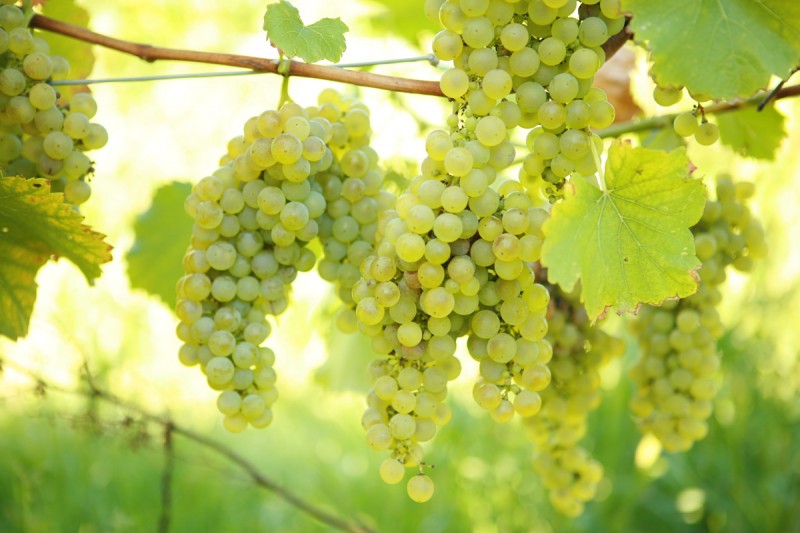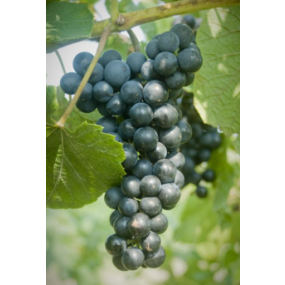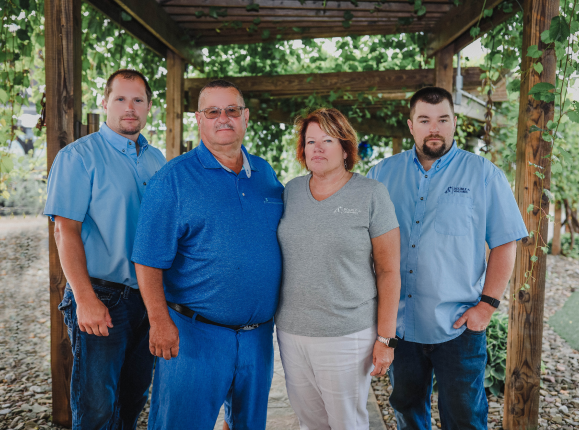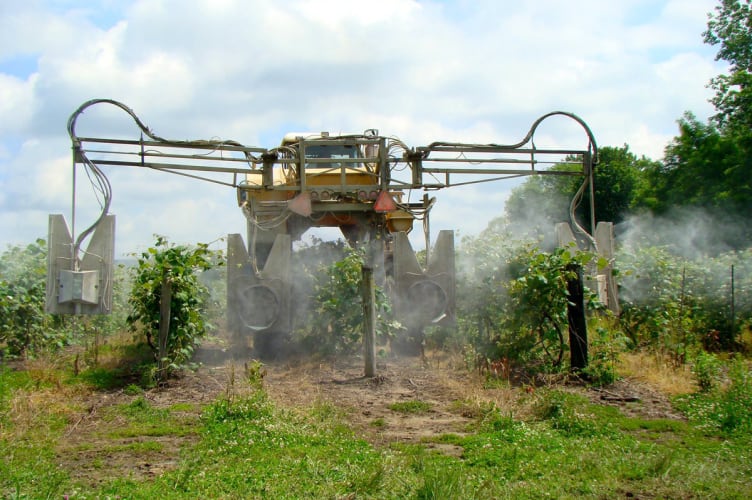Choosing the Right Grape Variety for your Location

Rick Dunst, Viticulturist, Double A Vineyards, Inc.
Now that harvest is over and winter is approaching, the staff at Double A Vineyards is starting to get a lot of phone calls and e-mails from our customers asking for assistance in selecting appropriate varieties to grow on their sites. While many of our customers know exactly what they want, others are just getting started at growing grapes and may not know which varieties are best suited for their vineyard location. Grape varieties differ in their tolerance to winter low temperatures; they bud out in the spring at different times, making them more or less susceptible to spring frost; and, they require a certain amount of heat units and length of growing season to fully ripen at a given location. Knowing the limitations of your site is largely a matter of personal experience (and that of your neighbors), and our catalog and website contain a wealth of information that can help you decide on a grapevine variety suited to your site. This article will focus on the limitations of both site and variety, and where to collect information that will help you determine the suitability of your vineyard site to produce ripe fruit from a specific grape variety.
Winter Hardiness
A variety’s lack of tolerance to low winter minimum temperatures is an obvious limiting factor to grape production in many parts of the United States. Our catalog lists grape varieties by their winter hardiness according to USDA hardiness zone. Most vinifera varieties are hardy in Zones 6 or 7, meaning that these varieties should be hardy to about 0° to -10°F, if they are managed well. Native American and hybrid varieties have a much broader range of winter hardiness, with some of the newer varieties from breeding programs in Minnesota and South Dakota being hardy to an anticipated -30° to -40°F! This hardiness information can be used along with the information provided on the USDA hardiness zone map to determine whether or not a variety may be suited to your region (more on the choice of that wording in a minute).
Our website has a link to Plant Map’s site that can determine a location’s USDA hardiness zone by postal zip code: http://www.plantmaps.com/. While the information derived from the USDA map is useful, it has limitations. USDA hardiness zones describe the “macroclimate”, the generally prevailing climate of a large geographic region. However, the “microclimate” of a specific vineyard site is just as important. For instance, the microclimate at the bottom of a slope with little air drainage will likely be much colder on a still winter night than a site at mid-slope. When you are attempting to assign a hardiness zone to your site, make sure you have considered the microclimate at your specific location.
Spring Frost Tolerance
The likelihood of a freeze event in the spring is another consideration. Maritime climates are influenced by large bodies of water that cool nearby land masses, thus delaying bud development in the spring. In comparison, continental climates are subject to wider temperature fluctuations so that days are warmer and nights are colder, leading to earlier bud development and the increased likelihood of spring frost or freeze damage to the emerging buds. There are two major factors that can influence the likelihood that a grape variety can withstand a spring cold event to produce a crop. The most important is the time of bud development in the spring. Some varieties inherently “break bud” later in the spring than others, thus making them less susceptible to a spring cold event. Our Grapevine Characteristics Chart lists relative bud break information for many of our varieties (this is a work in progress and will be updated as we collect data in future growing seasons). Varieties with differences in bud break of a few or several days can mean the difference between a crop largely lost to spring frost and a full crop of a later budding variety.
The second factor influencing successful grape production where spring frosts are likely is the ability of a variety to produce a crop, or at least part of a crop, from secondary buds that force after the primary buds have frozen. In our experience, hybrid varieties are more likely to be capable of producing moderate crops from secondary buds than are native or vinifera varieties.
Length of the Growing Season and Growing Degree Days
In addition to knowing the likelihood that a given variety will survive winter and spring cold events, you should also make sure the variety is likely to fully ripen at your location. Some short-season grape varieties may be able to ripen in a season as short as about 150 days (i.e., last anticipated spring frost date about May 1, and first anticipated fall frost date about September 30), while others require 180 days or more to ripen. There are many sources of growing season information, including this NOAA site with a national map:
www.ncdc.noaa.gov/oa/climate/freezefrost/frostfreemaps.html
You can also find this information at the state and (sometimes) county level; the more detailed the information you can find for your specific locale, the more useful the information will be.
Growing Degree Days
The fourth factor in determining whether or not your climate is suitable for a specific variety is knowing the amount of heat units, or Growing Degree Days (GDD), your location receives. The Weather Channel is an excellent source for this information:http://adstest.climate.weather.com/outlook/agriculture/growing-degree-days. GDD information is provided for a specific growing season, as well as long-term averages.
Our catalog lists each variety by time of harvest season: early, mid, or late. Growers with shorter, cooler growing seasons will want to concentrate on early harvest season varieties, while those with warmer, longer growing seasons should focus on later harvest season varieties. If you have questions about the suitability of a specific variety for your location, we suggest you make use of these resources, and as always, feel free to contact me at [email protected] if you need further information.
A Quick Comparison of Potential Vineyard Locations
Using the information provided in this article, I determined the general characteristics of two locations where grapes are grown commercially – Hermann, Missouri, in the heart of Missouri grape country, and Fredonia, New York, in the heart of the Lake Erie Concord Grape Belt and home of Double A Vineyards, Inc. Both locations are in Zone 5, so winter minimum temperatures may go as low as about -15°F, and the length of the growing season at each location is about 180 days. The major difference in the two locations is that Herman, Missouri, receives an average of about 3250 GDDs per season, while Fredonia receives an average of about 2650 GDDs. Norton (Cynthiana), Chambourcin, and Chardonel are all varieties that are hardy to at least Zone 5, and have relatively late bud break in the spring, so would be expected to thrive in both climates. The difference is that Hermann has more than sufficient heat units to ripen these cultivars in a typical season, while the Fredonia location typically has marginal heat units to ripen Chambourcin and Chardonnel, and inadequate heat units to ripen Norton/Cythiana. The Missouri wine industry produces some marvelous examples of Cynthiana, Chambourcin, and Chardonel wines, while growers in the Fredonia area produce many native, hybrid (and a few vinifera) varieties that are suited to the climate, but that require far fewer GDDs than are needed to fully ripen a cultivar such as Cynthiana/Norton. Consider all the climatic characteristics of your unique location when selecting an appropriate grape variety to grow.















What are the quick growing wine varieties that grow zone 8?
I would like to grow some grapes on a small lot I own at Horseshoe Bay Texas west of Austin in the hill country.
Any recommendations?
Hi, I have a few hectares in Colombia, South America, the altitud in my land is around 3500-3600 feet above sea level and the weather is warm during the day (about 82 degrees) and at night it fells at 62, in the firsts months of the year is rain season. The land is not flat, it is a slope. What type of grape should I choose to plant?
We’ve seen varieties like Sunbelt perform well in somewhat similar environments however we are unable to ship out of the United States. Best of luck in your growing.